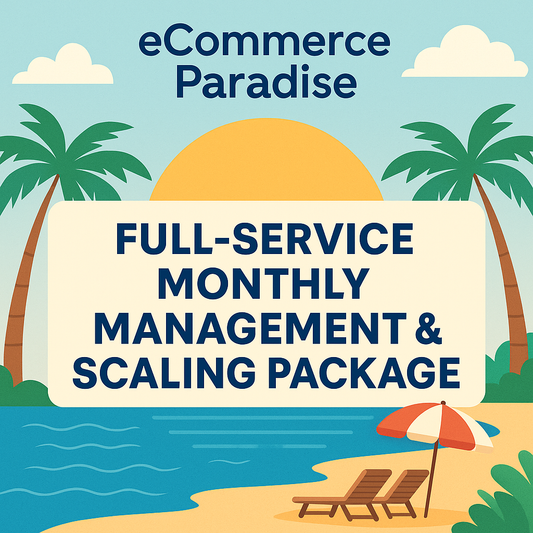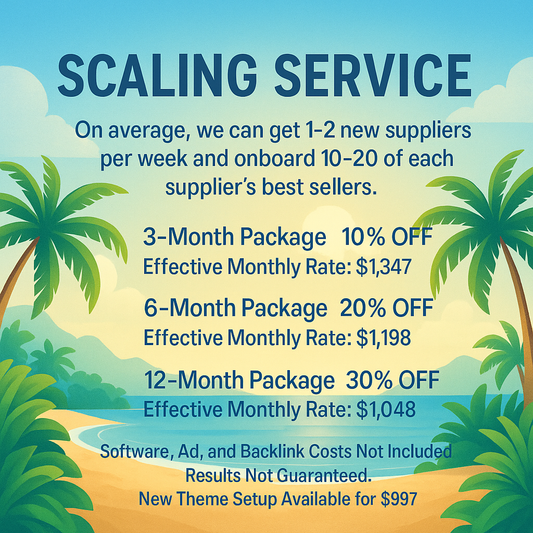How to Use Content Marketing to Boost Your Shopify SEO
Why blogging is the most underrated SEO strategy for ecommerce stores
If you run a Shopify store and want more traffic, you probably already know SEO matters. But most people don’t realize that blogging is one of the best ways to get more traffic — without spending a dime on ads.
And no, we’re not talking about writing fluff pieces or lifestyle content.
We’re talking about strategic, keyword-focused content that drives high-quality traffic to your product and collection pages.
Let’s break down how to use content marketing the right way for ecommerce.
Why Blogging Works for Shopify Stores
Google rewards websites that consistently publish helpful, relevant content. The more pages your store has that answer real questions, target specific keywords, and link internally — the more authority your site builds.
Every blog post is a chance to rank for a new long-tail keyword, answer a question your customer is already Googling, build internal links to your product and collection pages, and establish trust and expertise in your niche.
It’s not about becoming a blogger — it’s about building top-of-funnel traffic that supports your sales pages.
Content Ideas That Actually Drive Traffic and Sales
The key is to write content around what your ideal customer is searching for. Here are some proven blog formats for ecommerce:
Best-of Lists
Great for targeting “best” buyer-intent searches.
Example: “Best Solar Kits for Off-Grid Cabins in 2024”
Comparison Posts
Help buyers choose between two or more options.
Example: “Bluetti vs EcoFlow: Which Solar Generator Is Better?”
Buying Guides
Educate readers on what to look for before buying.
Example: “How to Choose the Right Tiny Home Appliances”
How-To Guides
Teach customers how to use your products.
Example: “How to Set Up a Backyard Skate Ramp (Step-by-Step)”
Care and Maintenance Tips
Keeps your audience coming back and supports SEO with “after-sale” queries.
Example: “How to Maintain Your Wood-Fired Pizza Oven”
Trends and Industry News
Build authority with timely, relevant content.
Example: “Top Outdoor Cooking Trends for Summer 2024”
Customer Stories or Case Studies
Build trust and provide social proof.
Example: “How This Family Went Fully Off-Grid with Our Solar Kits”
Internal Linking: The Real Power Move
One of the best SEO benefits of blogging is the ability to link directly to your product and collection pages from within your content.
This does two things:
-
Helps Google understand your site structure and page relationships
-
Passes link authority from your blog content to your money pages
Each post becomes part of your internal linking ecosystem — boosting SEO performance across your site.
Optimize Each Blog Post for SEO
Here’s a quick checklist to follow for every post:
-
Target a long-tail keyword in the title, H1, and meta description
-
Use proper headings (H2, H3) to structure the post
-
Include 1–3 internal links to products or collections
-
Add at least 1–2 images with descriptive alt text
-
Include a CTA (call-to-action) for relevant products or your newsletter
-
Make sure the content is 800–1500+ words if possible
Want a shortcut? Use a free tool like SurferSEO or RankMath to help guide your blog content as you write.
Blogging Drives Long-Term Traffic
Here’s the best part: a good blog post can drive traffic for months — or even years — after it’s published.
It’s one of the few marketing tactics that compounds over time.
You publish it once. It ranks. It brings in traffic. That traffic clicks through to your products. Some of them buy. Some join your email list. And the rest come back later.
It's like building an SEO flywheel — powered by content.
Want Help With Content Strategy?
If you want support building a content marketing system for your Shopify store, here’s how I can help:
Download the Ultimate SEO Checklist
Book a Free SEO Audit
Join the Ecommerce SEO Course + Discord Community
Next up in this series: How to Build Backlinks That Actually Boost Your Rankings


















